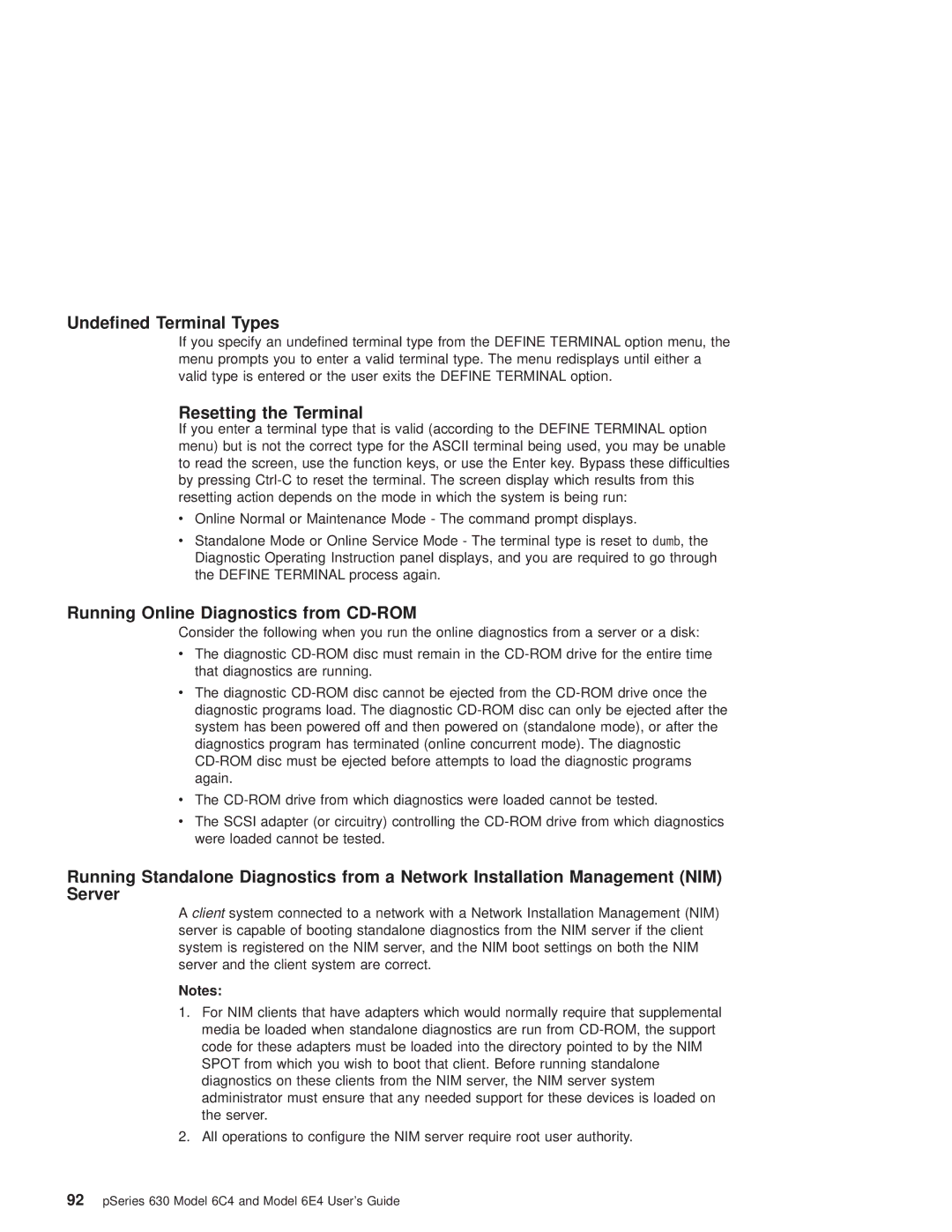Undefined Terminal Types
If you specify an undefined terminal type from the DEFINE TERMINAL option menu, the menu prompts you to enter a valid terminal type. The menu redisplays until either a valid type is entered or the user exits the DEFINE TERMINAL option.
Resetting the Terminal
If you enter a terminal type that is valid (according to the DEFINE TERMINAL option menu) but is not the correct type for the ASCII terminal being used, you may be unable to read the screen, use the function keys, or use the Enter key. Bypass these difficulties by pressing
vOnline Normal or Maintenance Mode - The command prompt displays.
vStandalone Mode or Online Service Mode - The terminal type is reset to dumb, the Diagnostic Operating Instruction panel displays, and you are required to go through the DEFINE TERMINAL process again.
Running Online Diagnostics from CD-ROM
Consider the following when you run the online diagnostics from a server or a disk:
vThe diagnostic
vThe diagnostic
vThe
vThe SCSI adapter (or circuitry) controlling the
Running Standalone Diagnostics from a Network Installation Management (NIM) Server
A client system connected to a network with a Network Installation Management (NIM) server is capable of booting standalone diagnostics from the NIM server if the client system is registered on the NIM server, and the NIM boot settings on both the NIM server and the client system are correct.
Notes:
1.For NIM clients that have adapters which would normally require that supplemental media be loaded when standalone diagnostics are run from
2.All operations to configure the NIM server require root user authority.
